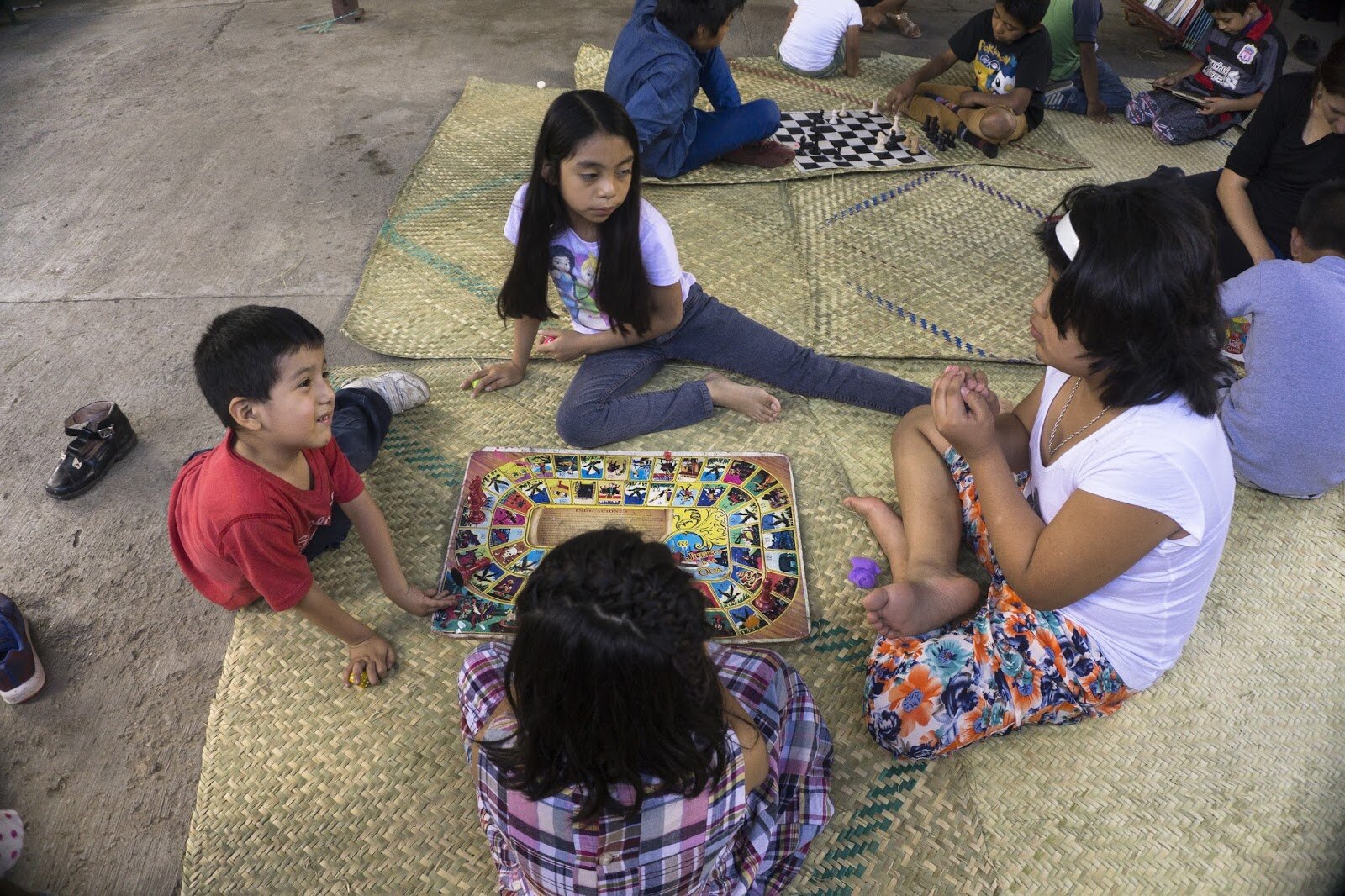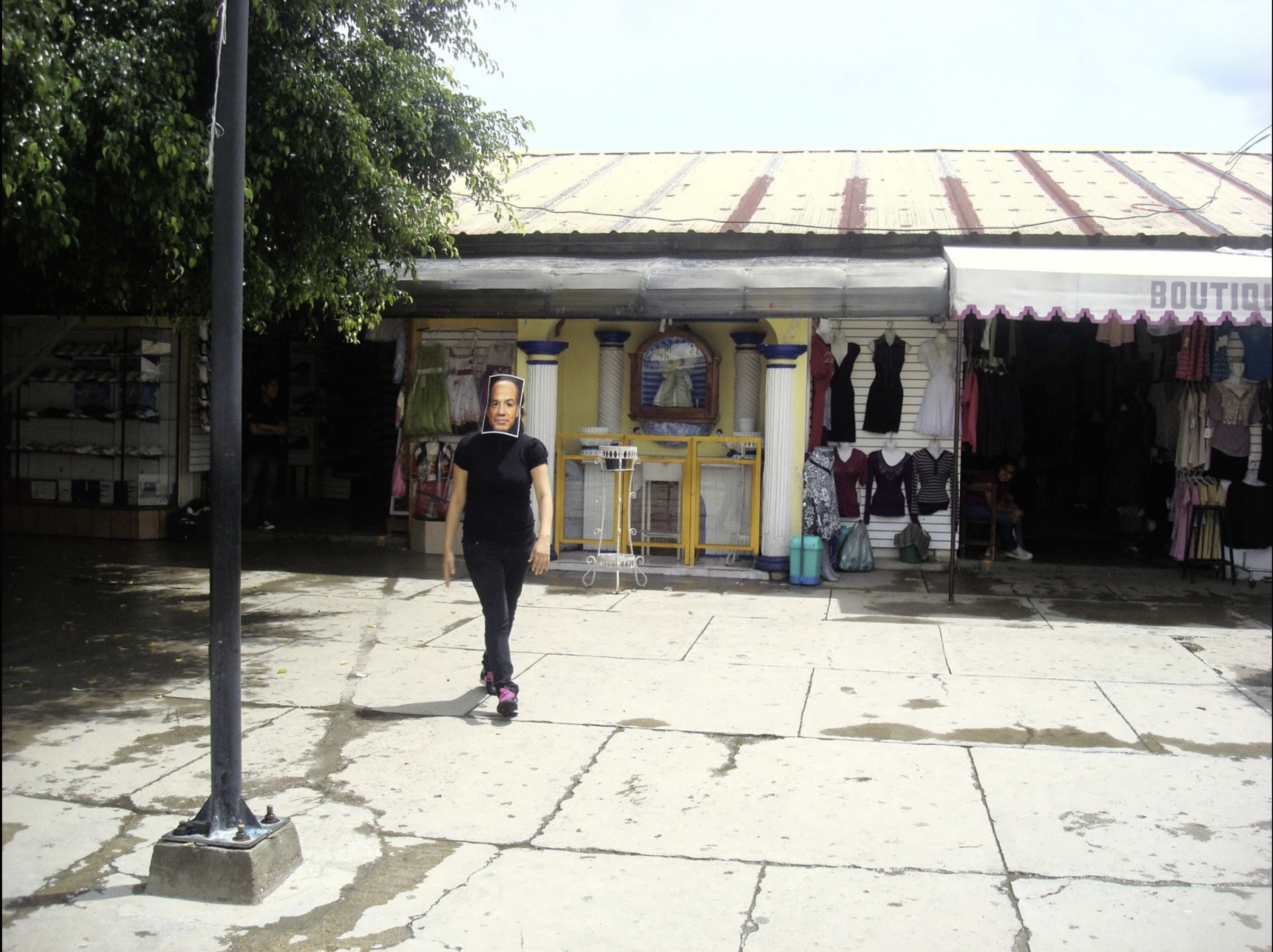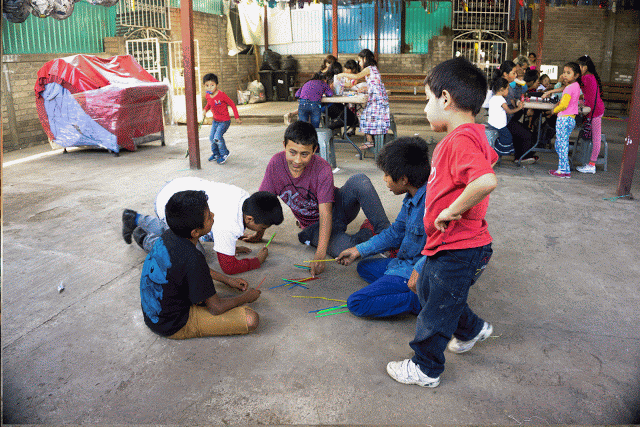
El Balcón
Since 2011, the organizers of El Balcón have responded to the social conditions of income inequality and low educational attainment in Oaxaca by engaging young people with an impromptu system of entertaining street theater that functions as a learning environment. Located on the periphery of the historic city center of Oaxaca, the Central de Abastos Oaxaca marketplace hosts dozens of locally-owned businesses. With over 12,000 vendors operating in the marketplace on a daily basis, it is easy to imagine the Central de Abastos as a world of its own. Artist Saúl López Velarde, who started the El Balcón project, noted in 2016 that this marketplace serves as a microcosm of Mexico, representing the intersecting systems of capitalism and resistance. [i] Importantly, the marketplace also points to important sectors of Mexican society that can easily be overlooked: children.
When vendors run their stalls, they may find it necessary to bring their children to work for various reasons, and often their children end up helping their families throughout the day. Saúl López Velarde explains that “Most of the children work, but we cannot say that they do and that makes their work invisible, in my opinion. Since it is ‘forbidden’ for children to work, nobody says they work; no, they ‘help’… Some are exploited and this is precisely why they need to engage in other activities and go to school.” [ii] Thus, El Balcón serves as a place of community for these children who may otherwise be overlooked or invisible. It provides space for children to socialize, learn, explore, and create, providing them with the tools to find their voices. “If there’s a chance for children to discover they have a voice of their own, that they can dance, paint, think, be heard and seen, then everything changes…” El Balcón not only provides an educational space for these children, but also gives them the tools to make themselves be seen and heard, cultivating their awareness as members of a community and citizens of Oaxaca, and even more broadly, of Mexico.
Contributors: Eric Charles, Lydia Cruz, Zachary Kanzler, Catherine Prechtel
// Photos and video appear courtesy of El Balcón unless otherwise noted.
Art practice as community building








El Balcón performer wears a mask of a Mexican Politician around the market

Children try on a mask that will later be used in one of the theater performances

Children watch theater performances, play games, and dance
‘Community building’ is a popular buzz phrase found in the mission statements of many organizations. However, few people take the time to define what kind of community they are building. Many communities are built out of hierarchical structures, monetary relationships, and abuses of power. To build a healthy community, one full of laughter and companionship, the kind people imagine when someone says Community Building, the crafters of that community must be vigilant and pure intentioned. The crafters must also be very self-aware. For these reasons, one of El Balcón’s central principles is the recognition that all communities contain some form of a power structure and this should be questioned - whether in the context of a family, Oaxaca, Mexico, or the world at large.
For example, one of El Balcón’s first successful activities was to take a poll in the Market Central de Abastos regarding who the most powerful people in Mexico were. El Balcón then took the poll results and made masks of the winners and wore them around the market. In this activity, the art of mask-making and the performance of impersonation were combined with the market-wide activity of voting. The community engaged with El Balcón’s artistic endeavor and therefore became a part of it. All of El Balcón’s activities and performances intend to foster this sort of community building, and Velarde credits Jean Genet’s 1950s play Le Balcon as an inspiration. [i]
Because power is something that exists ephemerally within communities, El Balcón considers it vital that the community be involved in exposing power. Once the power is exposed, the community can form new opinions about it and develop a more defined relationship to it. In this way, the community is built up horizontally and transparently.
Addressing income inequality
// “El diablo de los libros, ” Vientos-TV, Jan 29, 2018. Video, 3 min 13 sec.
Informal educational projects in Mexico that support children’s literacy, such as El Balcón, also target systemic poverty. In 2018, Oaxaca was tenth most populated state in Mexico at almost 4.1 million inhabitants. [i] [ii] 66.8% of the population state of Oaxaca lived in poverty in 2018, with an informal unemployment rate of 79.6, meaning that this sector of the population participates in the informal economy. [iii] Though Oaxaca is roughly representative of the entire country of Mexico in terms of income inequality, with similar disparities in income levels, it is important to recognize the connections between income inequality and educational attainment. Mexico has low levels of educational attainment compared to many other countries, with an average of 6.9 years of education per individual. [iv] [v]
According to the Organisation for Economic Co-operation and Development, “While access to education for 5-14 year-olds is universal in Mexico as in virtually all OECD countries, it has one of the smallest proportions of 15-19 year-olds enrolled in education (53%) among OECD and partner countries, despite having the largest population of this age group in the country’s history.” [vi] [vii] The educational attainment of Oaxaca was measured at 27.9 in 2018, meaning that 27.9% of the labor force had at least secondary education. While Oaxaca has seen improvements in many areas of the public sector in areas such as public safety, civic engagement, and infant and maternal mortality, Oaxaca still ranks lower than other Mexican states in terms of accessibility to basic services and income inequality. [viii] In fact, Oaxaca ranks 31 out of 32 in education compared to other Mexican states.
Education through empowerment
With lower-ranking educational attainment and continued income inequality, Oaxaca is faced with a need to provide educational opportunities to its youth, which can lead to greater changes of improved income levels and closing the income gap. In fact, higher educational attainment “will have a strong impact on reducing inequalities in many outcomes. Having a secondary school degree in Mexico can mean four more years of life expectancy compared to those with only a basic education” and also is related to a reduction in informal employment. [i]
Places such as El Balcón can in fact provide a grassroots approach to creating educational opportunities for Oaxaca’s youth and engineering it specifically to address the needs of children who may not otherwise have access to educational opportunities. El Balcón, then, specifically serves a marginalized community and provides a blueprint for other organizations looking to create safe spaces for children to build community and explore their creativity.









